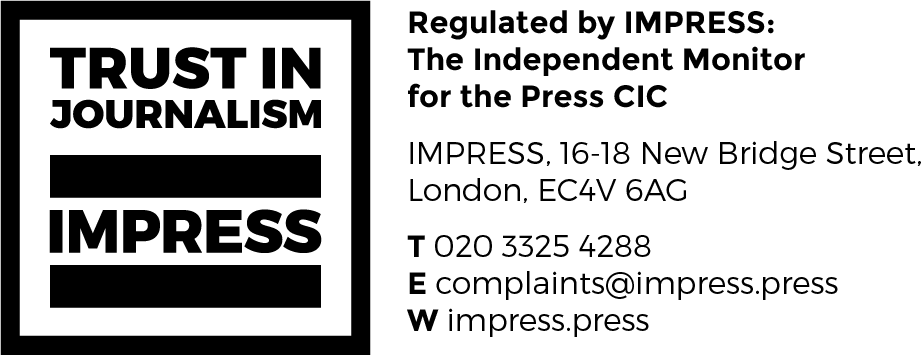Burgess’ Craven-Smith on painting, prospecting and the trials of a broker

Henry Craven-Smith is a partner at Burgess in London.
His love of procedure made Henry Craven-Smith lay newspaper on the chalet floor before painting. That’s when he saw it. The cryptic advert that changed his life.
Fast forward two decades and the senior partner at Burgess is braced for the disruption he believes is coming to the brokerage industry and senses “big opportunities” ahead.
Sign up for the Superyacht Investor newsletter
“Our business has been done the same way for almost 20 years and for some reason it hasn’t been disrupted,” he says. “Almost every single business across the board has been disrupted.
“Disruption always comes from the small players. We’re very cognisant of that and we have a strategy.”
READ: Cecil-Wright on ‘acceptance’ and the art of a broker
Untapped wealth
With a seat on the strategic board, Craven-Smith was part of the brains trust that reshaped Burgess to become “match fit” during Covid and he is confident in its positioning, with 14 offices worldwide and a database of 50,000 people.
“Covid was a pretty awful time but, on reflection, very interesting and probably the most dynamic time of our business,” he says. “Looking back, that’s what drives me – the pressure of business and the interesting and diverse nature of our clients.
“There is space for everyone in our game. Certain clients appreciate a more boutique approach, other clients like a more global reach. The strength of a company like ours is we have a presence in pretty much every major economy in the world so when we’re having a downturn in one part of the world, we’re picking up very quickly elsewhere.”
READ: Instability breeds uncertainty for market
One area of focus for Burgess is the US market, which Craven-Smith says is “very active” and “takes up a slot of slack elsewhere”.
“There is so much wealth in America, there are areas of it which are completely untapped,” he says. “Scottsdale, Arizona has a very high intensity of high net worth people – no one is tapping into that market. Who would have thought Scottsdale would be a good market for yachting? It’s in the middle of the desert, but it is.”

Craven-Smith handled the sale of Tom Perkins’ 88m (288ft) sailing yacht Maltese Falcon.
Painting to broking
Craven-Smith was bouncing around the Alps after university in 1999, and it was while painting a ski chalet in Chamonix that he spotted the job advert in an old copy of The Times newspaper he was spreading on the floor to catch the drips.
“Wanted: yacht broker…” it read. No company name was included in the advert, only a fax number, but he was intrigued. After a faxed resume and some trips to the pay phone he ended up speaking to Burgess’ Jonathan Beckett, who paid for him to fly to London for an interview – after a trip to the barber to trim his “shoulder-length hair”.
Back then Burgess was seven people in a small office in Pall Mall, London. Craven-Smith was hired and left the Alps to learn the ropes by a “process of absorption”. “One day the phones rings and you look around and there is no one else to answer so you take the call and start running with it,” he says. “It was very much a team approach and we’re going to pass that on to the next generation.”
READ: What yachting really thinks about sustainability?

Mondango 3 was sold in-house by Burgess in 2022.
‘Amazing man’
Burgess’ approach is to have a wide team of salaried employees who share the commissions, “which allows us to be very nimble and adaptable”, according to Craven-Smith, who describes himself as procedure- and process-minded rather than an extrovert.
“The hardest part of our business is prospecting, but we’re good at getting in front of people and I think that’s where your real traction comes from,” says Craven-Smith.
“As a team approach you have to put your best foot forward and we strategise quite carefully about who the right fit is for a particular client and we make sure we put the right person in the room. Sometimes I’ll meet a client and put up my hands and say, ‘I’m the wrong fit for this guy, we need to get so-and-so in front of him.’”
READ: 6 brokers on the headwinds facing the industry
One prospect that paid off handsomely was his relationship with the late Tom Perkins, the entrepreneur and venture capitalist, who built the 88m (288ft) three-masted, square-rigged sailing yacht Maltese Falcon. Craven-Smith had worked with Perkins on several previous boats and was able to put the deal together in-house when the time came for the American to sell Maltese Falcon in 2009.
“He was an amazing man and for someone of his stature, he was very hands-on, he turned up for the survey insisting he wanted to be on board,” he says. “The boat was his brainchild and he was very passionate about it. Every evening after dinner, Tom, the captain Chris Gartner and I would sit around the card table and debrief on what happened that day.
“For a man who had such impact on that world, he wanted to know a lot about you. He asked questions, asked my opinion, challenged you. I feel very privileged to have spent that time with someone of his stature. That’s one of the highlights of my career.”
READ: Sales market suffers ‘hangover’ after triple cocktail

The 57.5m (188ft) sailing yacht Twizzle was sold by Henry Craven-Smith.
‘Bouncing back’
Longevity has been key for Craven-Smith, who says a lot of his business is from “slow burn” contacts.
“Once, with a designer, I did a magazine advertorial for a futuristic sailing boat project,” he says. “It was a shot in the dark, but we managed to solicit some interest and 10 years later one of the relationships I built off the back of it ended up building a boat in Holland which I was heavily involved in.
“It’s a long process, a very slow burn. I’ve sold two boats three times over my career, and you begin to know the boat very well and your client very well.”
On other occasions, he says, he’s been for a meeting at a client’s house to discuss their new build and the conversation has turned to what is available in the brokerage market and they’ve wrapped up a deal on an existing boat in seven days.
“It’s the speed of these things that’s very unpredictable,” he says. “I would say only 25% of any prospects I’m working on will ever go on and buy a boat so you’ve got to keep building your pipeline business.”
Craven-Smith says he spends a lot of time mentoring junior brokers in the art of bouncing back from a deal that didn’t come off.
“Speak to any brokers who’ve been in the game 20 years or so and they would say they’ve probably lost more deals than they’ve won, but they’re very good at picking themselves back up,” he says.
“I did a large project for a Middle Eastern client, which I worked on for 14 years, starting when I was 24. In the end it didn’t happen, but I learned early on you can’t just drop everything else in favour of the big deal because if it doesn’t happen you’re left high and dry.
“You have to respect that sometimes it just doesn’t work out. Frustrating as it is, you’ve just got to dust yourself off and get on with it otherwise it will drag you down.
“It’s a very emotional game and it’s very easy to get wrapped up in it.”
Subscribe to our free newsletter
For more opinions from Superyacht Investor, subscribe to our email newsletter.

